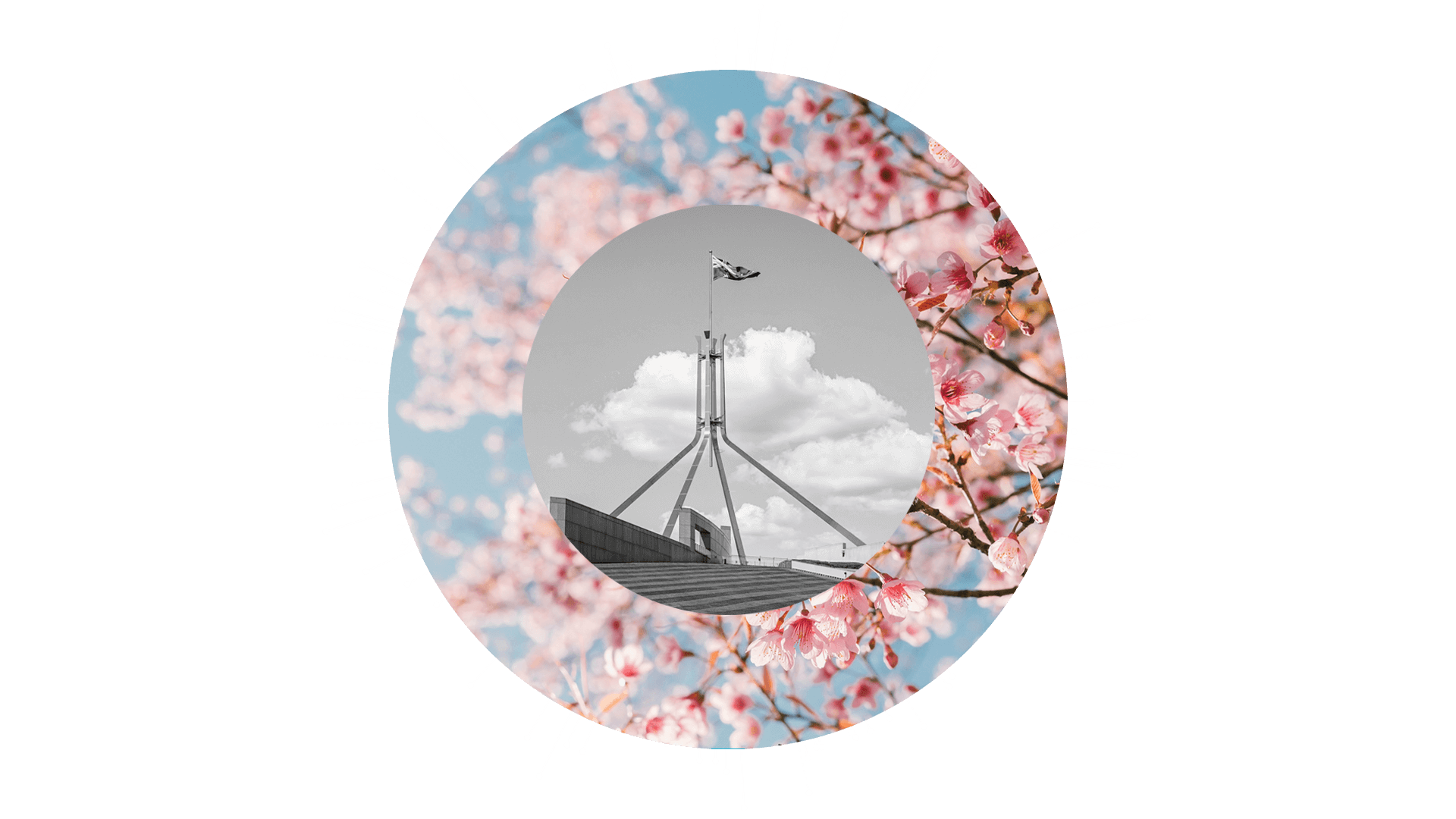
About the JSPSAAA annual symposium
The annual symposium of the Japan Society for the Promotion of Science Alumni Association in Australia (JSPSAAA) will from 22-23 November at the Shine Dome, Australian Academy of Science in Canberra.
This is an opportunity to celebrate the collaborative links between Australia and Japan. Speakers from both countries will showcase their research, promoting collaboration and networking.
The conference is proudly sponsored by the Australia-Japan foundation initiative(DFAT) and the University of Canberra.
You are cordially invited to attend and/or present your research.
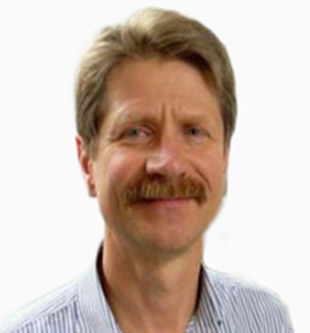
Prof Andrzej Kilian
About Prof Andrzej Kilian
After completing in 1987 his PhD on population genetics of Arabidopsis thaliana in Poland, Andrzej was a Postdoctoral Fellow funded by FAO/IAEA at the Plant Breeding Institute (PBI) in Cambridge, UK. His work in Cambridge provided the first indication of synteny among cereal genomes. While at PBI, he worked on the first field release of a genetically engineered food crop (potato). His studies on developmental regulation of telomeres and telomerase in plants provided the first indication that telomerase activity may be related to cellular differentiation and proliferation. After arriving in Australia, he led the work that resulted in the cloning of the catalytic subunit of human telomerase a key biomedical target for cancer and aging research. Andrzej invented and lead development of Diversity Arrays Technology, DArT. He is a founder and the Director (President) of Diversity Arrays Technology Pty Ltd (DArT) which is providing genetic and IT services to a global customer base. He is primarily involved in further DArT development and IT technologies for data storage and data mining in agriculture and ecology.
Two into one: bringing ecological principles into agricultural practice for sustainable future
The last century has seen quite dramatic gains in the productivity of industrial agriculture, through advances in mechanisation and heavy use of chemicals. Modern breeding techniques, including genetics, have been used to produce new cultivars with increased yield potential. This has played a significant role in averting hunger and malnutrition for millions of people. However, there is a downside. Chemicals degrade the land, and a reliance on just a few crops brings about a loss of biodiversity. The result is that while the world produces more than enough food to feed the global population, as many as 800 million people still go hungry - and this number continues to grow.
This, and climate change, are key factors behind a search for new solutions to achieve not only more productive, but also more sustainable agriculture. These new strategies need to design and achieve ecologically sound agroecosystems. This can be achieved, with ecological knowledge, and a high level of integration with the local environmental, social and commercial reality. Our longer-term vision is to use available genetic and environmental data to take a broader view - redesigning cropping systems at country, continent and global levels. A new data management system currently in development, and cooperation with a range of strategic partners, are stepping stones towards this ambitious goal.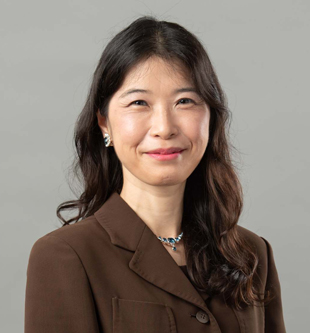
Prof Chiharu Tokoro
About Dr Chiharu Tokoro
Dr. Tokoro is received her PhD from the University of Tokyo, Graduate School of Engineering. Currently, she is a professor at Waseda university and the University of Tokyo. Her research is focused on advanced separation technologies for resource circulation, especially mineral processing, chemical engineering, and powder processing for waste/wastewater treatment and recycling. She is the author of 16 books, over 150 articles, and more than 20 inventions. She is also a member of the Science Council of Japan (SCJ) and the Engineering Academy of Japan (EAJ). She has also fulfilled her duty as a Director or a leading position of several academic societies in Japan.
Creation of a New Resource Circulation Loop by Electrical Pulsed Dismantling
The compatibility of resource circulation with the reduction of environmental burdens, such as carbon neutrality, is one of the major challenges facing us. Many reports have expressed concern that the use of certain mineral resources will increase more rapidly than at present due to the promotion of the use of renewable energy and lithium-ion battery. The circular economy is one solution to this problem, but energy-saving separation technologies and product design for easy disassembly are indispensable for its realization. In this presentation, I will introduce an example of our attempt to develop a new separation technology and resource recycling loop for lithium-ion batteries and PV panels as an example. In the lithium-ion batteries, it was possible to separate the aluminum foil, which is the current collector foil of the cathode material, and the black mass, which is the cathode active material, with high accuracy using an electrical pulsed discharge. Since the separated cathode active material has not undergone any chemical transformation, it is expected to be regenerated as oxide by post-treatment and used as cathode active material again. In PV panels, when electric pulses are applied to silver wires in the cell sheet after the glass has been separated, the silver wires become plasma and can be separated from the resin as particles with high precision. The shock waves generated during this process can also separate copper wires and some silicon from the resin. We have confirmed that these methods can separate materials without heating or chemicals and are also advantageous from the perspective of LCA.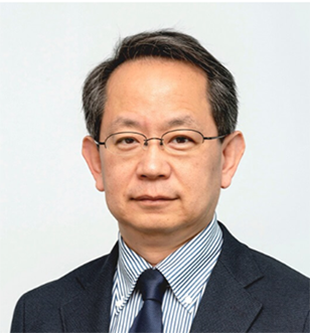
Prof Iwao Hosako
About Prof Iwao Hosako
Iwao Hosako received his PhD from the University of Tokyo in 1993. After two years at ULSI Laboratory of NKK Corp. from 1993 to 1994, he joined Communications Research Laboratory (former name of NICT). He is currently the Executive Director of the Beyond 5G Research and Development Promotion Unit and Director General of the Terahertz Research Center at the National Institute of Information and Communications Technology (NICT), Japan. His research focuses on terahertz semiconductor devices, cameras, wireless systems, standards, and regulations. He has served as Vice Chair of the IEEE 802.15.3d Task Group and is currently Vice Chair of the IEEE 802.15 Standing Committee on Terahertz (SC-THz) and IEEE 802.15.3mb. He served as a working group member of the Beyond 5G (6G) Promotion Strategy Roundtable of the Ministry of Internal Affairs and Communications, Japan from January 2020 to June 2020.
How to use terahertz wireless communications at 6G
In the next generation of mobile communication systems (beyond 5G or 6G), terahertz radio communication is expected to be introduced, enabling ultra-high speed of over 100 Gbps using the frequency band above 100 GHz. The attractiveness of terahertz radio, the use cases, the current status of R&D, etc. will be discussed.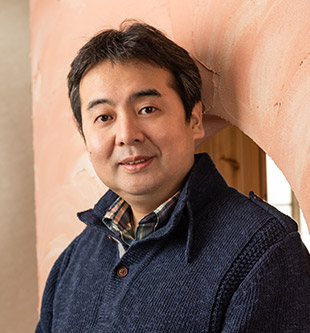
Prof Kei Murayama
Abour Prof Kei Murayama
Diagnosis and Therapeutics of Intractable Disease, Intractable Disease Research Center and Department of Pediatrics, Juntendo University Faculty of Medicine
Clinical and molecular basis of mitochondrial disease and medicine in Japan
“Mitochondrial disease” is a collective term for various clinical disorders characterized by a failure of mitochondrial function and energy production. Mitochondria are intracellular organelles with a double membrane. Mitochondria play an essential role in cells in the biosynthesis of adenosine triphosphate (ATP) via oxidative phosphorylation (OXPHOS). ATP is produced by the ATP-synthase complex, which is driven by the proton-motive force created by the respiratory chain complexes (complexes I, III, and IV). Impairment of OXPHOS leads to organ damage. This is referred to as mitochondrial respiratory chain disorder, which is considered to occur at a frequency of 1 in 5000 births in Japan and Western countries. Leigh syndrome is a major phenotype of mitochondrial encephalopathy in children. It is known as a ‘subacute necrotizing encephalopathy’ and is a genetically heterogeneous disease that primarily affects the central nervous system. With new therapeutic options being proposed, assessing the mortality and clinical condition of Leigh syndrome patients is crucial for evaluating therapeutics. We have published the data on mortality in Leigh syndrome patients concerning effects of age at onset and genetic diagnosis in 2020 (Ogawa E et al. J Inherit Metab Dis. 2020). Mitochondrial encephalomyopathy, lactic acidosis, and stroke-like episodes (MELAS) is also a phenotype with encephalopathy in childhood. m.3243A>G is the most common mtDNA mutation that can cause MELAS. The administration of oral and intravenous L-arginine, a precursor of nitric oxide, has improved the clinical symptoms of stroke-like episodes in MELAS and decreased the frequency and severity of stroke. Taurine supplementation is also a specific treatment for MELAS with m.3243A>G, which has been covered by medical insurance in Japan since 2019. Taurine can restore the taurine modification in MELAS patients with m.3243A>G mutation and promote the maturation of tRNALeu (UUR). In this lecture, the clinical and genetic features, including novel treatment, of mitochondrial disease in children are focused.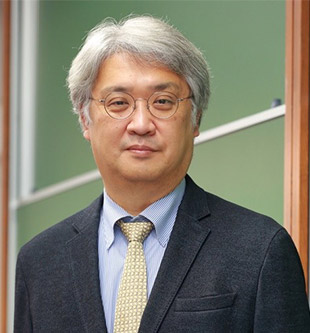
Prof Kenji Kajiwara
About Prof Kenji Kajiwara
Kenji Kajiwara is the Director of the Institute of Mathematics for Industry (IMI), Kyushu University since October of 2022. He received his Ph.D. degree in 1994 from the Department of Applied Physics, Graduate School of Engineering of The University of Tokyo. He worked at Doshisha University in Kyoto from 1994 to 2001 and then moved to the Faculty of Mathematics at Kyushu University. He became a founding member of the current institute in 2011. His research expertise is mathematics, in particular, the theory of integrable systems, discrete differential geometry, and geometric shape design. Currently, he is the PI of the interdisciplinary project among mathematics, architecture, industrial design, and informatics under the scheme of JST CREST. He has been a Director of the IMI Australia Branch in La Trobe University since 2015, with an adjunct professorship from La Trobe University since 2018. He served as a Vice President of the Japan Society for Industrial and Applied Mathematics for 2020-2022 and also a member of the Australian Mathematical Society and Australia New Zealand Industrial and Applied Mathematics. He is currently serving as an Officer-at-Large of the International Council for Industrial and Applied Mathematics since October 2023.
Development of Mathematics for Industry in Asia Pacific Area: New Research Area, Education and Platform
In this talk, we exhibit activities of "Mathematics for Industry" (MfI) in Japan, initiated by the Institute of Mathematics for Industry(IMI), Kyushu University founded in 2011. MfI intends to develop a new research area of mathematics formed by responding to the needs of industries. It is associated with various relevant activities, one of which is the international activities. The IMI has been trying to establish strategic international relationships putting a particular emphasis on the Asia Pacific area. To this end, we established the IMI Australia Branch jointly with La Trobe University in 2015 as a base in this area. We will explain the various challenges made at the IMI Australia Branch, and how we overcome the difficulties in management arising from the difference of two countries.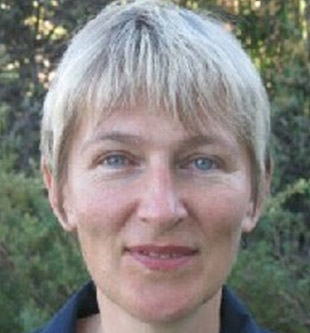
Prof Marina Pervukhina
About Prof Marina Pervukhina
Dr. Marina Pervukhina is a Principal Research Scientist at CSIRO Energy. Her research interests include rock physics, petrophysics, AI/ML methods, and their optimization using constitutive physics-based relations for subsurface characterisation. She is an author of 100+ publications, including three book chapters. Marina is an Adjunct Professor at Curtin University. She serves as an Associate Editor for Geophysics, Journal of Society of Exploration Geophysicists, and runs an Education column in Preview, an Australian Society of Exploration Geophysicists magazine.
Advancing Energy Futures: JOGMEC and CSIRO Collaborative Research in Transition Fuels and Digital Transformation
Yusaku Konishi (JOGMEC), Yoshitake Kato (JOGMEC), Damian Barrett (CSIRO), Yevhen Kovalyshen (CSIRO) and Marina Pervukhina (CSIRO) In a rapidly evolving global energy landscape, the journey toward a sustainable energy future necessitates innovation, cross-border collaboration, and the merging of traditionally siloed research areas. The collaboration between the Japan Organization for Metals and Energy Security (JOGMEC) and Australia’s Commonwealth Scientific and Industrial Research Organisation (CSIRO) epitomizes this convergence, setting a benchmark for international research partnerships. In this presentation, we provide an overview of our cutting-edge collaborative projects in the domains of transition fuels enhanced recovery, industry decarbonization, and digital transformation. Supported by industry partners from both Japan and Australia, as well as academic stakeholders, the outcomes of this collaboration underscore the potential for technology to drive forward-thinking solutions in the energy sector.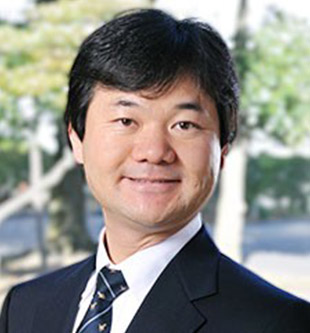
Prof Masanori Tachikawa
About Prof Masanori Tachikawa
Dr. Masanori Tachikawa obtained his Ph.D. in Chemistry from Waseda University in 1995, undertook “Research Fellowship for Young Scientists (PD)” from JSPS at Emory University (USA) and Rikkyo Univ., and “Special Postdoctoral Researcher (SPDR)” in RIKEN in 2000. In 2003, he moved to Yokohama City University as an Associate Professor, promoted to Professor in 2006. He has about 250 peer-reviewed publications and many conference papers.
His research area is “Computational Chemistry” and “Quantum Chemistry”. He is developing new quantum simulation methods, in which both electrons and hydrogen nuclei are treated quantum mechanically. He has applied these methods to various systems from material science to biochemistry. He has earned awards for “Young Scholar Lectures of the Chemical Society of Japan, 2006”, “The Young Scientists’ Prize, The Commendation for Science and Technology by the Minister of Education, Culture, Sports, Science and Technology 2007”, “Award of Society of Computational Chemistry, Japan, 2017”, and “International Award of Japan Society of Molecular Science, 2019”.H/D isotope effect in protonated/deuterated aqueous solution
Water dissolves various substances, and many essential chemical reactions occur in aqueous solution. The proton (H+) behavior in an aqueous solution is also crucial in biochemical reactions and proton transfer in living organisms. On the other hand, the behavior of deuteron (D+) in heavy water (D2O), an isotope of water, is still unclear. In this study, thus, we have applied the on-the-fly path integral molecular dynamics simulation, which can include both the nuclear quantum effect and thermal effect. To elucidate the isotope effects of H+/D+ behavior in an aqueous solution, we calculated the systems of H+ in light water solvent and D+ in heavy water. We found a significant isotope effect around the Eigen H3O+/D3O+ region. First, the structures with Zundel H5O2+, H7O3+, and H9O4+ were confirmed at the system of H+ in a light water solvent, while such structures are less at that of D+ in heavy water. We also found the H/D isotope effect at the radial distribution function of O-O distances.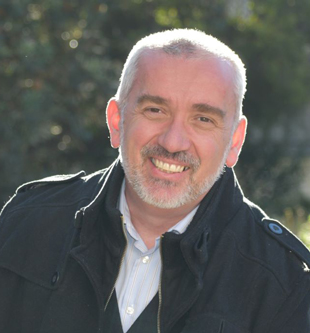
Prof Nenad Naumovski
About Dr Nenad Naumovski
Dr Nenad Naumovski (PhD, MAIFST) is a Chef, Food Scientist and Molecular Nutritionist and works at the University of Canberra (ACT, Australia) as a Professor in Food Science and Human Nutrition. He leads a Functional Foods and Nutrition Research Laboratory (FFNR Laboratory) and holds academic conjoint positions as the Visiting Professor at the Harokopio University of Athens (Athens, Greece), Abertay University (Scotland) and University of Newcastle (Australia). Nenad has a strong research interest in the development of functional foods and the effects of food and nutrients on psycho-cardiometabolic markers associated with healthy ageing.
The role of food science and human nutrition on development of functional foods for the management of stress, anxiety and sleep
There is strong evidence that supports the importance of adhering to adequate dietary patterns in the overall human health. The rise in technological advancements, convenience of quick and easy meals to prepare, accessibility and overindulgence in ultra-processed foods were seen as the hallmarks for majority of the health issues currently seen in the world. With the global population on increase and consequences of recent pandemic (economical, physical and psychosocial) it is a no surprise that the levels of stress and anxiety in the population are also on the rise. Furthermore, poor dietary choices and some aspects of mental health are directly related, allowing for the continuation of vicious cycle of this two-way relationship. This presentation will include the findings from current studies relating to some of the functional foods and nutraceuticals as well as adhering to different dietary approaches that may be used in coping with stress, management of anxiety and improvements in the quality of sleep. Some of the most common functional foods and beverages of animal and plant origin including their active functional groups will also be presented.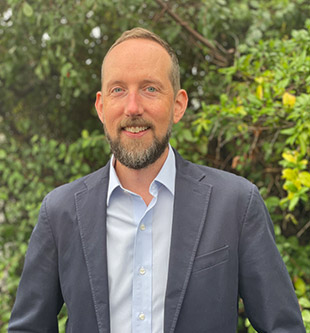
Paul Harris
About Paul Harris
Executive Director, Innovative Research Universities (IRU).
Paul commenced as Executive Director of the IRU network in September 2021. Prior to this, Paul worked for over seven years in diplomatic positions in Australia’s Embassies in the United States and Japan. From 2010-2013 Paul worked at the Australian National University (ANU), he was the Deputy Director of the Australian National Institute for Public Policy and the HC Coombs Policy Forum at ANU. Previously, Paul worked for seven years at the Commonwealth Scientific and Industrial Research Organisation (CSIRO), Australia’s national science agency, where he was General Manager of Government and International Relations. He has also worked for Senate Committees in the Australian Parliament and in publishing and journalism, as well as serving on the selection panel for the Fulbright International Science and Technology Award. Paul holds a Master’s degree in international affairs from ANU.Recent developments in Australian Government policy and what they mean for Australia-Japan collaboration
Over the last year, the Australian Government has undertaken a number of major policy reviews that will have significant impacts on higher education, research and innovation. These include the Australian Universities Accord process, the review of the Australian Research Council and the review of the National Science and Research Priorities. This presentation will highlight future directions for Australian research and innovation policy and opportunities for closer Australia-Japan cooperation into the future.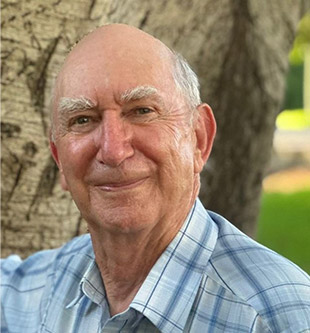
Prof Peter Bridgewater
About Prof Peter Bridgewater
From 1990-1997, Peter was CEO of the Australian Nature Conservation Agency (which included the statutory role of Director of National Parks and Wildlife) chairing a range of intergovernmental bodies from the International Whaling Commission, UNESCO’s Man and the Biosphere Council and the sixth Conference of the Parties to the Ramsar Convention on Wetlands.
Between 1997-199 he was Chief Science Adviser to Environment Australia, which included the Statutory role of the Supervising Scientist of the Alligator Rivers Region. After four years as Director of the Division of Ecological Sciences in UNESCO, in 2003 he became Secretary General of the Ramsar Convention until 2007, when he became Chair of the UK Joint Nature Conservation Committee, serving two terms until 2014. He was involved with CBD and its SBSTTA from inception in a range of roles for Australia, the UK and Intergovernmental Organisations. Since 2015 he has held honorary posts at Beijing Forestry University, the University of Canberra, and the Australian National University, and has assisted Australia’s work at the Intergovernmental Platform for Biodiversity and Ecosystem Services (IPBES) and UNESCOs Man and the Biosphere Programme. He currently Chairs Wildlife Health Australia.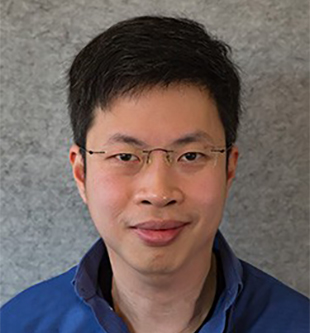
Prof Withawat Withayachumnankul
About Prof Withawat Withayachumnankul
Withawat Withayachumnankul completed Bachelors and Masters degrees in electronic engineering at King Mongkut’s Institute of Technology Ladkrabang (KMITL), Thailand, in 2001 and 2003, and a doctorate degree in electrical engineering with a Dean’s Commendation at the University of Adelaide, Australia, in 2010. Also in 2010, he was awarded a three-year Australian Research Council (ARC) Postdoctoral Fellowship. In 2015, he was a Research Fellow of the Japan Society for the Promotion of Science (JSPS) at the Tokyo Institute of Technology. Dr. Withayachumnankul is a Professor with the University of Adelaide, and the Leader of the Terahertz Engineering Laboratory. He has been a Visiting Researcher at Osaka University since 2017. Currently, he serves as a member for the Australian Research Council (ARC), and College of Experts and as a Track Editor of the IEEE Transactions on Terahertz Science and Technology. Between 2017 and 2018, he was the Chair of the IEEE South Australia Joint Chapter on Microwave Theory and Techniques (MTT), and Antennas and Propagation (AP). He has authored and co-authored more than 100 journal publications. In recent years, he has been the lead investigator for four ARC grants, totalling to over AUD 1.5 million. His research interests include terahertz waveguides, metasurfaces, antennas, radar, communications, metrology, and non-destructive evaluation. He was the recipient for the IRMMW-THz Society Young Scientist Award 2020.
Japan-Australia Joint Corporation of Advanced Terahertz Technology
Terahertz technology explores the electromagnetic spectrum, encompassing frequencies from 100 GHz up to 10 THz, which situates it between the microwave and infrared domains. In the past, this spectral range was known as the terahertz gap due to difficulties in wave generation, detection, and manipulation. However, recent advancements have dismantled these barriers, unveiling new opportunities for harnessing terahertz waves in a wide range of applications from communications to sensing. I have led my Terahertz Engineering Laboratory in collaboration with esteemed terahertz research groups at institutions such as the Tokyo Institute of Technology, Osaka University, Kyushu University, and Keio University. In this presentation, I will delve into our latest achievements in terahertz source development, platform innovations, detector technologies, and their diverse applications. Attendees can look forward to gaining insights into the groundbreaking work at the forefront of terahertz technology.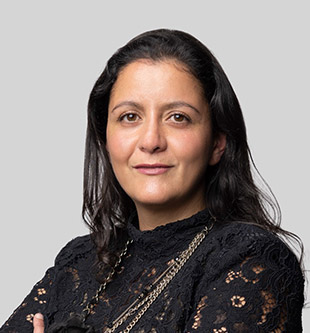
Dr Amani Batarseh
About Dr Amani Batarseh
Dr Amani Batarseh is the Chief Scientist at BCAL Diagnostics Ltd developing a blood test for breast cancer detection. She graduated magna cum laude from La Roche College in Pennsylvania where she had a Pacem in Terris scholarship for academic excellence. Later, she received a fellowship to purse her PhD at Georgetown University, Washington, DC in Biochemistry and Molecular & Cellular Biology. Amani completed post-doctoral studies at Harvard University, McGill University and Wollongong University before joining BCAL Dx in late 2017. During her time in Canada, Amani managed and co-established two mass spectrometry laboratories being at the Research Institute of McGill University Hospital and The Glen Hospital in Montreal. Her versatile profile of expertise combines molecular biology with lipidomics and mass spectrometry to answer biological questions.
Advancements in the Detection of Localised Breast Cancer by Lipidomic Signature Directly from Plasma
One in seven Australian women are at risk of a breast cancer diagnosis in their lifetime. Early detection is key for survival. Mammography, used for over three decades, is the current diagnostic standard. An effective and accurate blood test may increase the detection rate and improve patient outcomes. We have derived a lipid signature from plasma-enriched extracellular vesicles (EVs) that effectively distinguishes localised breast cancer from cancer-free controls. Significant refinements have allowed assessment of the lipid signature directly from plasma samples, advancing the commercial viability towards clinical application. A lipid signature, which shows high potential for distinguishing breast cancer samples from controls, can be derived directly from plasma, reducing the test complexity. Ongoing studies will optimize the plasma lipidomic signature and prospectively compare the test against mammographic and pathological diagnoses.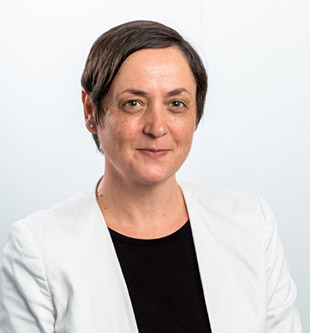
Dr Bobby Cerini
About Bobby Cerini
Dr Bobby Cerini is General Manager of Science and Learning at Questacon. She is responsible for quality and creative direction, national strategic engagement and impact of Questacon’s activities to deliver successful exhibitions and programs throughout Australia.
Bobby has recognised expertise in science communication and STEM engagement, gained over the last 20 years in leading initiatives for government, cultural and academic organisations in Australia, the United Kingdom and New Zealand.
Bobby represents the Department of Industry, Science and Resources on a variety of STEM program boards across Australia, and in key national and international stakeholder networks. Bobby holds a PhD in science communication, with research into the influence and impact of contemporary science heroes (ANU).
Looking back, facing forward: 35 years of Australia-Japan collaboration in science engagement
Australia and Japan have a long history of collaboration on shared issues of science communication. A significant shared investment was the establishment of Questacon as Australia’s National Science and Technology Centre in 1988, enabled through support from the Japanese government and business community. Over 35 years, Questacon has been a hub for strong engagement between Australian and Japanese science communicators, connecting to universities, science agencies, museums and community organisations. Together we have hosted many bilateral visits and discussions, developed programs for the exchange of skills and knowledge, and worked in collaboration and co-design on projects of shared interest. This talk will share case studies and stories from this rich past and outline some key challenges for future science communication cooperation, from emergent technologies to changing audiences and more.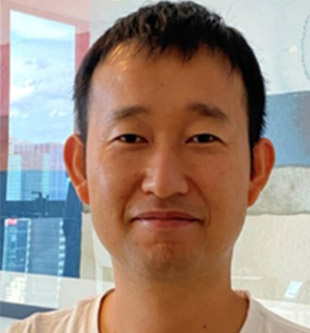
Izuhara Takero
About Izuhara Takero
Takero Izuhara is currently based in Melbourne from January 2021 to set up the new Softbank office and extend the business in this region.
In Australia, he is leading breakthrough Technologies such as AI, IoT and Robotics.Before coming to Australia, he worked for the subsidiary of SoftBank Corp in Singapore for 5 years and IBM Japan. Takero is a member of JCCIM and of the school council at Victoria Primary School.Artificial Intelligence and Robotics in Australia
STSA aims to promote the development of an AIR (Artificial Intelligence + Robotics) industry as well as to expand SoftBank technology in Australia by partnering with businesses, researchers, and start-ups.So Takero Izuhara will share some of their case studies related to AIR.Symposium agenda
| Introductory Session | |
| 08.00 - 08.30 | Registrations |
| 08.30 - 08.35 | Prof Dr Janine Deakin Country Acknowledgment and Welcoming message University of Canberra |
| 08.35 - 08.40 | Ashraf Ghanem Introduction of JSPSAAA JSPSAAA |
| 08.40 - 08.45 | Mr Yasuhara Koji Message from JSPS Tokyo JSPS - Tokyo |
| 08.45 - 08.50 | Ms Michiko Miyano Message from the Embassy of Japan in Canberra Minister, Embassy of Japan in Canberra |
| 08.50 - 08.55 | Prof (Hon) Caroline McMillen AO Fahms Message from Australia - Japan Foundation (AJF) Australia - Japan Foundation |
| 08.55 - 09.00 | Prof Maxwell J. Crossley Message from The Australian Academy of Science (AAS) Australian Academy of Science |
| 09.00 - 09.10 | Break |
| Session 1 Chair: Tamim Darwish |
|
| 09.10 - 09.35 | Andrzej Kilian Two into one: bringing ecological principles into agricultural practice for sustainable future Diversity Arrays Technology Pty Ltd |
| 09.35 - 09.55 | Pat Wongpan Helicopter-based ocean observations capture broad ocean heat instrusions toward the totten ice shelf University of Tasmania |
| 09.55 - 10.15 | Pierluigi Cesana Fully automatization of ring-opening reactions in lactone derivatives via 2-step machine learning Kyushu University |
| 10.15 - 10.35 | Amani Batarseh Advancements in the detection of localised breast cancer by lipidomic signature directly from plasma BCAL Diagnostics |
| 10.35 - 11.00 | Morning Tea |
| 11.00 - 11.25 | Chiharu Tokoro Creation of a new resource circulation loop by electrical pulsed dismantling Waseda University and The University of Tokyo |
| 11.25 - 11.45 | Cris dos Remedios Collaboration between Australian human heart tissue biobanks and Japanese heart researchers Victor Chang Cardiac Research Institute |
| 11.45 - 12.05 | Scott G Stewart Dirthodium catalyzed reactions for the preparation of natural products and valuable materials University of Western Australia |
| 12.05 - 12.25 | Cheng Jiang 3D RBSM: A new mesoscale discrete approach for FRP-Concrete Interfacial Simulation Western Sydney University |
| 12.25 - 12.45 | Shaneel Chandra From measurement to monitoring: Why pollution research needs a rethink and reboot Central Queensland University |
| 12.45 - 13.10 | Iwao Hosako How to use terahertz wireless communications at 6G National Institute of Information and Communications Technology (NICT) |
| 13.10 - 14.00 | Lunch |
| Session 2 Chair: Ashraf Ghanem |
|
| 14.00 - 14.25 | Paul Harris Recent developments in Australian Government policy and what they mean for Australia - Japan Collaboration Innovative Research Universities (IRU) |
| 14.25 - 14.45 | Jonathan C. Aitchison Accreted REY-rich OPS in Gondwana margin subduction complexes: A new target for critical mineral resources University of Queensland |
| 14.45 - 15.10 | Faisal Hai Generation of microplastics from the current plastic recycling process - an uninternational consequence of concern University of Wollongong |
| 15.10 - 15.35 | Mitra Safavi-Naeini Advancements and translational potential of neutron capture enhanced particle therapy ANSTO |
| 15.35 - 16.00 | Kei Murayama Clinical and molecular basis of mitochondrial disease and medicine in Japan Juntendo University |
| 16.00 - 16.15 | Afternoon tea |
| Session 3 Chair: Mitra Safavi-Naeini |
|
| 16.15 - 16.30 | Holly Tootell From Play to Progress: Co-Designing Technology for Early Learners University of Canberra |
| 16.30 - 16.45 | Prof Kenji Kajiwara Development of mathematics for industyry in Asia Pacific area: new research area, education and platform Kyushu University |
| 16.45 - 17.00 | Chamari Jayarathna Japan - Australia collaboration: systems approach for transitioning to a decarbonized circular economy University of Queensland |
| 17.00 - 17.30 | Depart for the reception at the Embassy of Japan |
| Time | Session | Topic / Speaker(s) |
|---|---|---|
| 10.00 - 10.15 | Introductory Session | Welcome to Country |
| 10.15 - 10.30 | Introductory Session | Welcome to UC |
| 10.30 - 10.45 | Introductory Session | Introduction to Mental health harm Prevention (MhhP) |
| 10.45 - 11.15 | Session 1: Universal Risks | Eco-anxiety - Dr Léan O’Brien, Teaghan Hogg (HDR) |
| 11.15 - 11.45 | Session 1: Universal Risks | Smartphone use - Assoc Prof. Amanda George, Beau Mostyn Sullivan (HDR) |
| 11.45 - 12.15 | Session 1: Universal Risks | Big Morning Tea |
| 12.15 - 12.30 | Session 2: Selective Risks | Driving behaviours (e-scooters) - Assoc Prof. Amanda George |
| 12.30 - 12.45 | Session 2: Selective Risks | Drinking behaviours - Dr Caroline Ng |
| 12.45 - 1.00 | Session 2: Selective Risks | Physical activity and sport - Prof Richard Keegan |
| 1.00 - 1.15 | Session 2: Selective Risks | Eating - Phoebe Joshua (HDR) |
| 1.15 - 1.30 | Session 2: Selective Risks | Adolescent mental health - Dr Dimity Crisp, Distinguished Prof Debra Rickwood |
| 1.30 - 2.30 | Lunch | |
| 2.30 - 3.00 | Session 3: Early Intervention | Emotional regulation (WOKE) - Dr Dean Buckmaster, Chloe Bosworth (HDR) |
| 3.00 - 3.30 | Session 3: Early Intervention | Early online support (NOMOS) - Distinguished Prof Debra Rickwood, Dr Kelly Mazzer |
| 3.30 - 3.45 | Tea Break | |
| 3.45 - 4.30 | Session 4: Future Directions | Future research needs in ACT region - panel discussion |
| 4.30 - 4.45 | Session 4: Future Directions | Closing remarks |
| 4.45 - 5.00 | Drinks and Networking |


